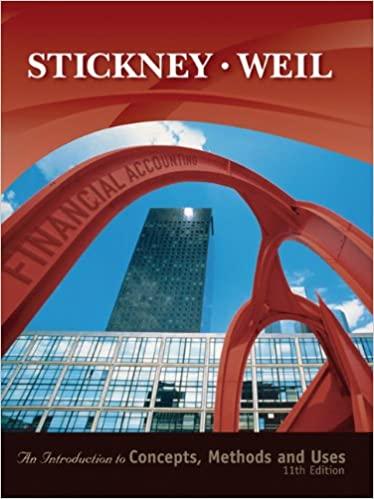Accounting for long-term bonds. The notes to the financial statements of Aggarwal Corporation for Year 4 reveal
Question:
Accounting for long-term bonds. The notes to the financial statements of Aggarwal Corporation for Year 4 reveal the following information with respect to long-term debt. All interest rates in this problem assume semiannual compounding and the effective interest method of amortization.
December 31, December 31, Year 3 Year 4 5800,000 zero coupon notes due December 31, Year 13, initially priced to yield 10 percent $ 301,512 ?
$1,000,000, 7 percent bonds due December 31, Year 8. Interest is payable on June 30 and December 31. The bonds were initially priced to yield 8 percent ? $966,336
$1,000,000, 9 percent bonds due December 31, Year 19. Interest is payable on June 30 and December 31. The bonds were initially priced to yield 6 percent $1,305,832 ?
a. Compute the book value of the zero coupon notes on December 3 1 . Year 4. A zero coupon note requires no periodic cash payments: only the face value is payable at maturity. Do not overlook the italicized sentence above.
b. Compute the amount of interest expense for Year 4 on the 7 percent bonds.
c. On July 1. Year 4. Aggarwal Corporation acquires half of the 9-percent bonds ($500,000 face value) in the market for $526,720 and retires them. Give the journal entry to record this retirement.
d. Compute the amount of interest expense on the 9-percent bonds for the second half of Year 4.
Step by Step Answer:

Financial Accounting Introduction To Concepts Methods And Uses
ISBN: 9780324222975
11th Edition
Authors: Clyde P. Stickney, Roman L. Weil





